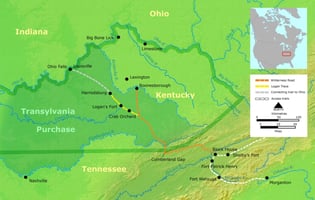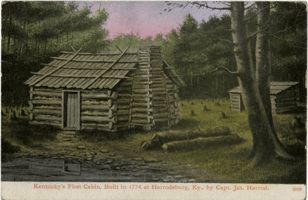The land we now know as Kentucky was once part of Virginia. For many years the Appalachian...
Part 2: THE FIRST STATIONS
James Harrod was one of those early explorers, first coming to the Bluegrass region of Central Kentucky in 1767 with 37 men by way of the Ohio River and the Kentucky River. They explored the area, chose a suitable location and began construction of a fortified “station” (think about a train station, someplace where you can stop, rest, and resupply safely) before returning east to bring their families and additional supplies. Harrod’s Fort or Harrod’s Town, now Harrodsburg, the first permanent English settlement in Kentucky, was founded in 1774. By the year 1777 almost 200 people lived there in 18 cabins (note, that’s an average of 11 people per cabin), each 20 feet square, within the 10-foot high stockade fort. Two springs and even a school were inside the walls, which were well equipped by portholes and 2nd story overhangs to shoot along the wall lines.
HARROD'S OLD FORT: 1791 Willard Rouse Jillson Register of Kentucky State Historical Society, Vol. 28, No. 82 (January, 1930), pp. 104-114 (11 pages) https://www.jstor.org/stable/23370070
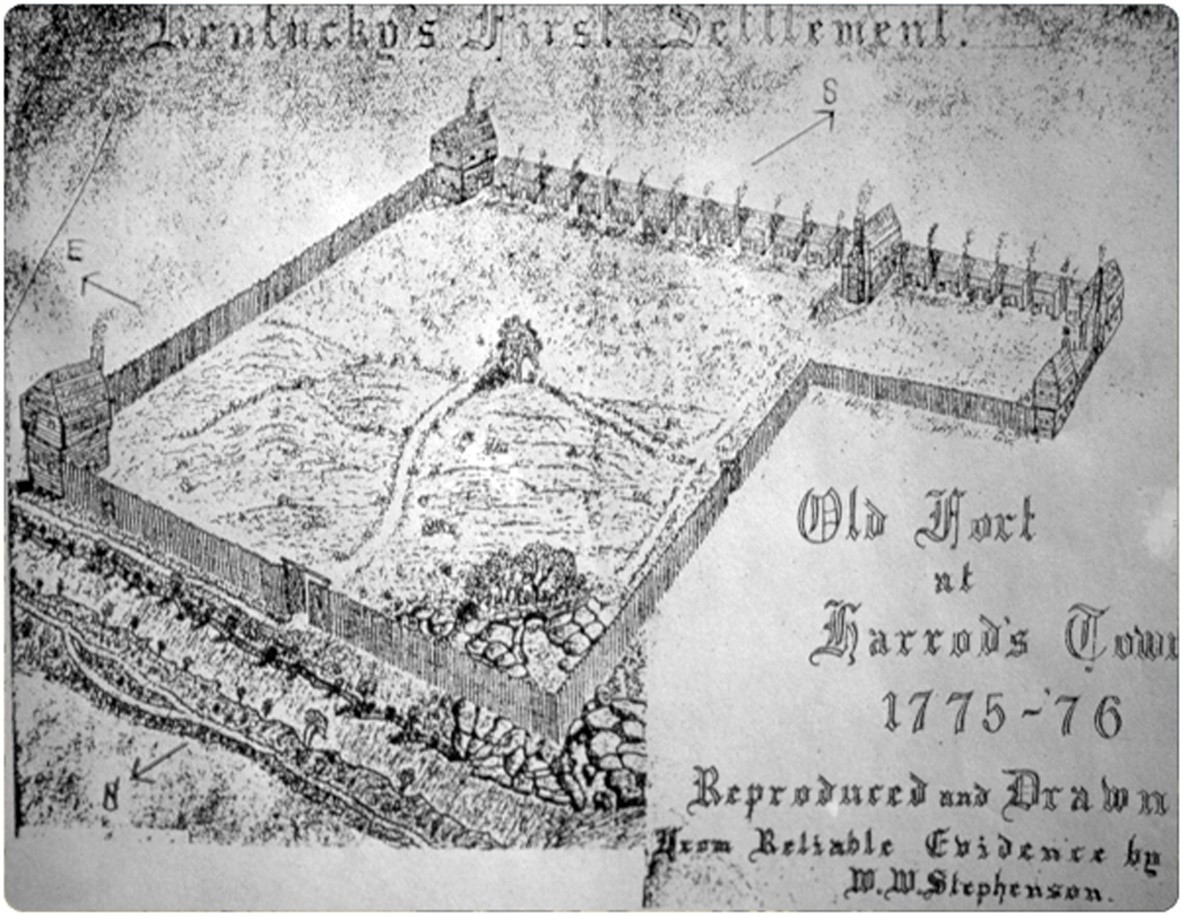
In 1775 Daniel Boone founded Boone’s Station, or Fort Boonesborough, about 40 miles from Harrodsburg. It boasted 26 log cabins and four blockhouses, and served as a waystation for settlers travelling the Wilderness Road and crossing the Kentucky River. The community survived numerous attacks from native Americans, including a two-week siege in 1778 by 400 Indians and French mercenaries who were hired by the British.

Fort Boonesborough, By Unknown author - [1], Public Domain, https://commons.wikimedia.org/w/index.php?curid=986175
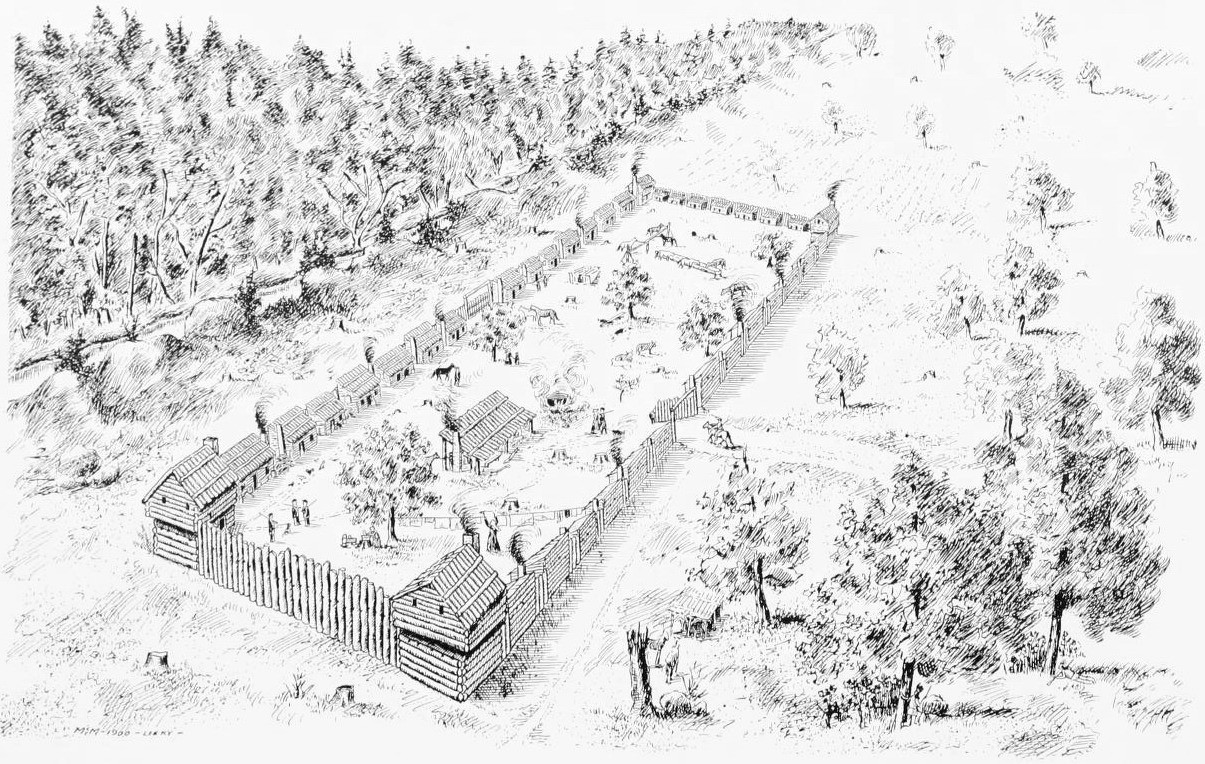
Fort Boonesborough. Just before Celebrated Siege of September, 1778. From "Boonesborough; its founding, pioneer struggles, Indian experiences, Transylvania days, and revolutionary annals" by George Washington Ranck (1901).
Survival in those early years depended on hunting ample game and surviving attacks from Native tribes. Everyone depended on the community as a whole and anyone going outside the walls knew there was a chance of attack by Native Americans, so people going to work in the communal fields had armed guards. ***** Kidnappings occurred regularly, including of Daniel Boone’s 13 year old daughter Jemima and two of her friends who went out in a canoe in July 1776: they were rescued only 3 days later. https://en.wikipedia.org/wiki/Capture_and_rescue_of_Jemima_Boone

https://kentucky-museum.org/jemima-boone/
Money was mostly irrelevant in daily life, as there was very little available to buy; barter was common and maintaining good relationships with neighbors was essential. “my wife and I had neither spoon, dish, knife, or anything to do with when we began life: only I had a butcher knife. . . . The first dishes we had were trenchers made by one Terry in the station - a turner. He turned dishes and bowls, and being no hunter exchanged them for meat and tallow to us hunters.”
There was some traffic between the new settlements and more civilized areas, though the long and difficult trip made the cost of goods very high: only essentials could justify the effort and risk. Just as when the first American colonies were established, everything possible was produced in the new settlement, and if it couldn’t be made they found a way to do without it. Farm animals were few, as they were not well suited for the long overland journey, and were easy prey for local predators outside the fort’s walls. Wild animals provided meat, warm skins for blankets, and leather for clothing and equipment. Corn was the first crop, growing to legendary size and productivity in the fertile soil in communal fields. Later on hemp and flax were planted to make clothing and rope, as well as a wide variety of plant foods.
<** add story from farming article >

From https://theclio.com/entry/644
Between 1774 and 1790, 16 years after Fort Harrod was created, approximately 200 stations had been started in Kentucky, mostly in the center of the state where natural resources were richest: lands to the west were not yet free of Native American claims. After about 1785 the sheer number of white settlers made the country safer for them, and they felt free to settle individual farmsteads outside fort walls. The last of the Stations were opened around the year 1790. http://genealogytrails.com/ken/history_earlysettlements.html By 1810 Fort Boonesborough had only 8 families in residence, https://parks.ky.gov/sites/default/files/listing_documents/29f62b4b45eb647e941a630345c5b709_Ftboonepktbrohtext.pdf, and by the year 1815 Fort Harrod was abandoned.
Today Fort Boonesborough State Park in Richmond Kentucky and Old Fort Harrod State Park in Harrodsburg both have recreated forts for visitors to learn more about early Kentucky settlement life.
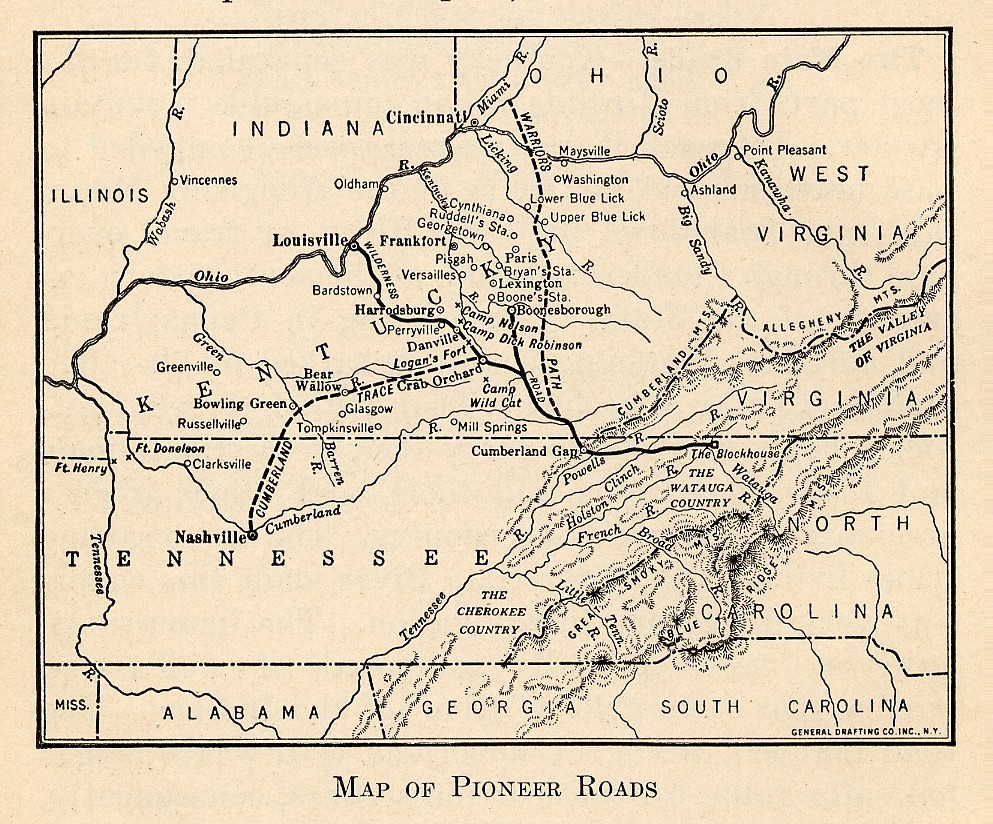
https://www.sos.ky.gov/land/resources/Pages/Geographic-Materials.aspx
